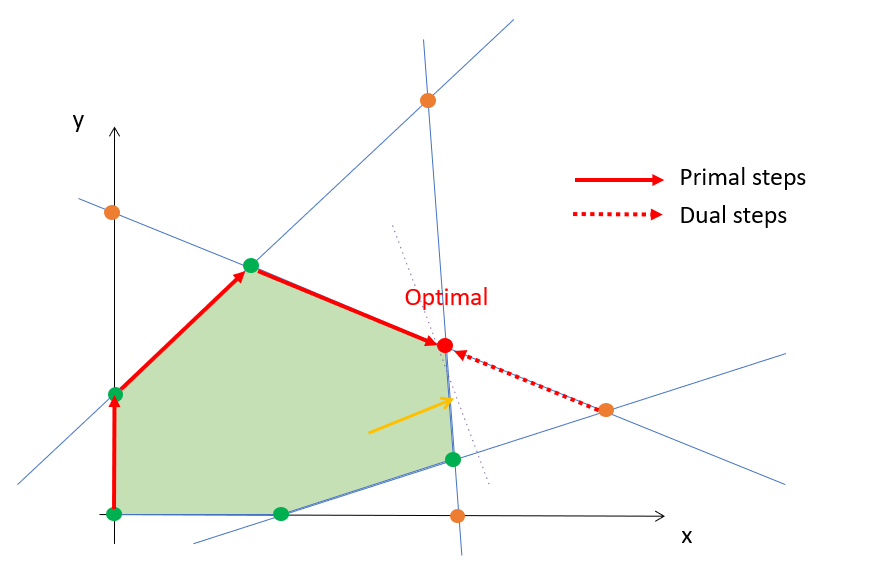I am trying to understand the motivation behind the Dual Simplex Method. However, I have run into some roadblocks while understanding the rationale behind the Dual Simplex Method. This is my current understanding of the Simplex, Primal and Dual problem:
$1$. For a minimization problem, the Simplex Algorithm proceeds with first a basic feasible solution; then it replaces individual basis columns with an external column until $c_j - C_B B^{-1} A_j >0~\forall~j$ where $c_j$ is the $jth$ cost tuple ; $C_B$ is the cost corresponding to the feasible basis $B$ and $A_j$ is the $jth$ column external to $B$.
$2$. If $x_0$ be the primal feasible solution and $y_0$ be the dual feasible solution and both satisfy the complementary slackness conditions, then $x_0$ is the primal optimal solution and $y_0$ is the dual optimal solution.
$3$. If $c^T x_0 = b^T y_0$ where $B$ is the feasible basis, then $x_0$ is the primal optimal solution and $y_0$ forms the dual optimal solution.
Using this, my professor has tried to implement the Dual Simplex Algorithm by first accounting for a tuple of the RHS $:b_r < 0$ and then proceeding ahead.
However, I do not quite understand the need to consider $b_r < 0$ nor the algorithm ahead. Could someone help me build the dual simplex algorithm from here?
